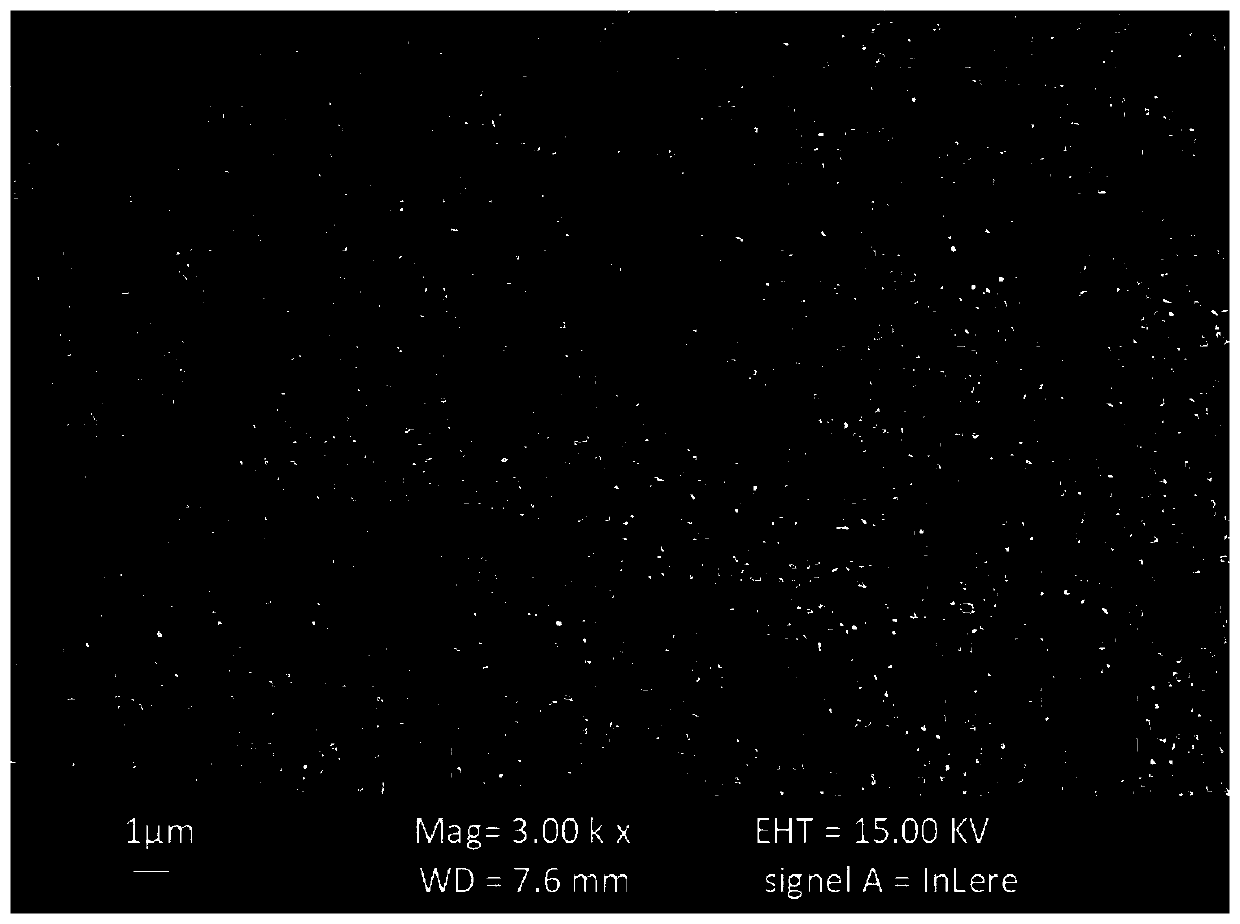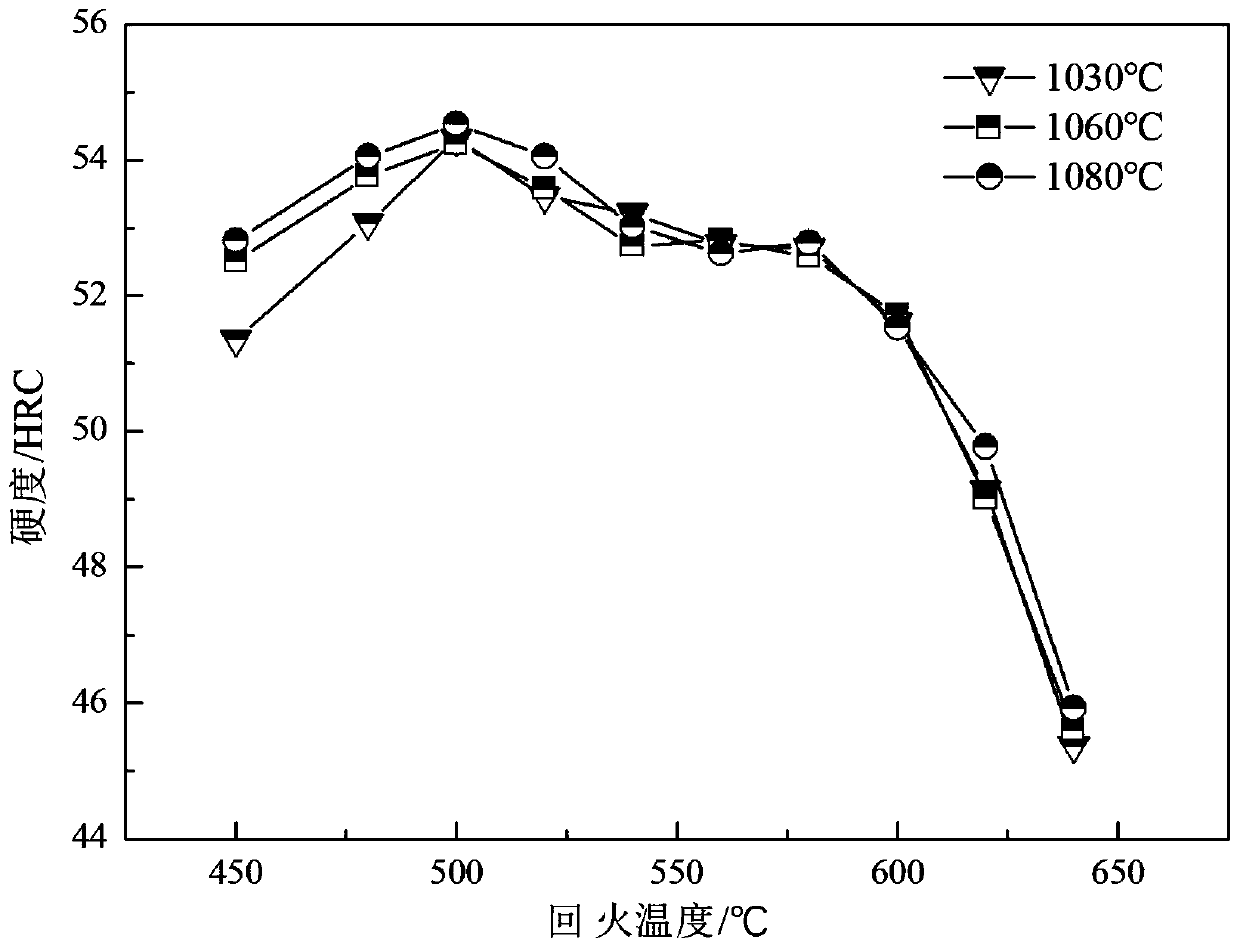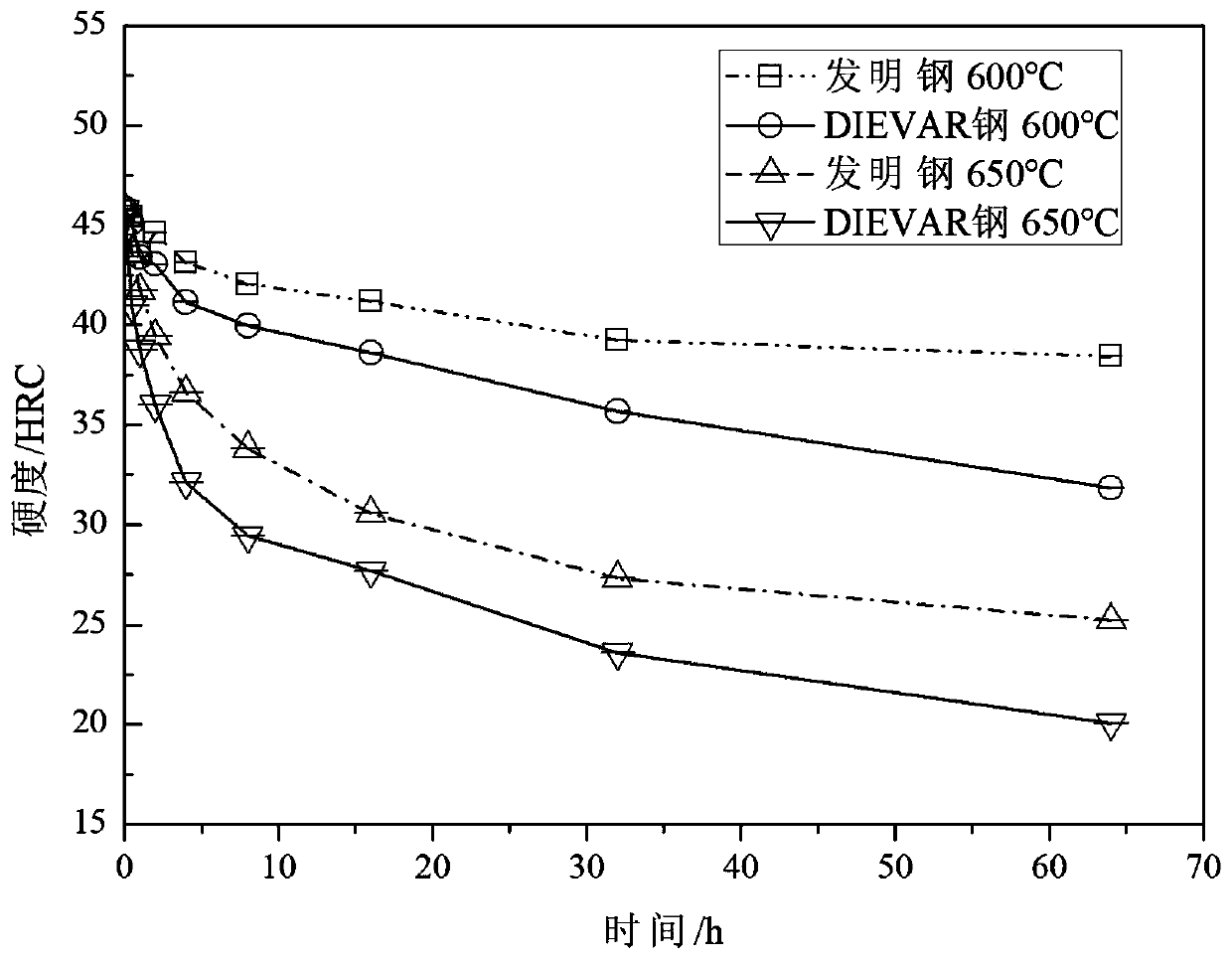High-thermal-stability die-casting die steel and preparation method thereof
A high thermal stability, die-casting mold technology, applied in the field of alloy steel manufacturing process, can solve the problems of decreased thermal fatigue performance, hindered VC precipitation and transformation, decreased thermal stability of die steel, etc., to improve wear resistance and thermal stability performance. , The effect of reducing the content of Cr element and reducing the segregation of inclusion components
- Summary
- Abstract
- Description
- Claims
- Application Information
AI Technical Summary
Problems solved by technology
Method used
Image
Examples
Embodiment 1-3
[0036] A high thermal stability die-casting die steel, the chemical composition and mass percentage are as follows:
[0037]
Embodiment 4
[0039] The preparation process and steps of die-casting die steel in the above-mentioned embodiment 1 are as follows:
[0040] A. Smelting: According to the chemical composition and weight percentage of the high thermal stability die casting die steel as shown in the above table, carry out batching and smelting;
[0041] B. Electroslag remelting: Remove the riser of the steel ingot after smelting and pouring, remove the surface oxide skin and put it in the electroslag remelting device. The steel ingot gradually crystallizes from bottom to top to complete the electroslag remelting;
[0042] C. High-temperature homogenization heat treatment: the homogenization temperature is 1250°C, and the time T1 homogenization time is 10h;
[0043] D. Forging: The steel ingot that has undergone high-temperature homogenization treatment is cooled to a temperature range of 1100°C for forging processing, the final forging temperature is 880°C, the upsetting ratio during forging is 2.3, and the d...
Embodiment 5
[0048] The preparation process and steps of die-casting die steel in the above-mentioned embodiment 2 are as follows:
[0049] A. Smelting: According to the chemical composition and weight percentage of the high thermal stability die casting die steel as shown in the above table, carry out batching and smelting;
[0050] B. Electroslag remelting: Remove the riser of the steel ingot after smelting and pouring, remove the surface oxide skin and put it in the electroslag remelting device. The steel ingot gradually crystallizes from bottom to top to complete the electroslag remelting;
[0051] C. High-temperature homogenization heat treatment: the homogenization temperature is 1220°C, and the time T1 is 12h;
[0052] D. Forging: The steel ingot that has undergone high-temperature homogenization treatment is cooled to a temperature range of 1180°C for forging processing, the final forging temperature is 880°C, the upsetting ratio during forging is 3, and the draw ratio is 5.3;
[...
PUM
 Login to View More
Login to View More Abstract
Description
Claims
Application Information
 Login to View More
Login to View More - R&D
- Intellectual Property
- Life Sciences
- Materials
- Tech Scout
- Unparalleled Data Quality
- Higher Quality Content
- 60% Fewer Hallucinations
Browse by: Latest US Patents, China's latest patents, Technical Efficacy Thesaurus, Application Domain, Technology Topic, Popular Technical Reports.
© 2025 PatSnap. All rights reserved.Legal|Privacy policy|Modern Slavery Act Transparency Statement|Sitemap|About US| Contact US: help@patsnap.com



